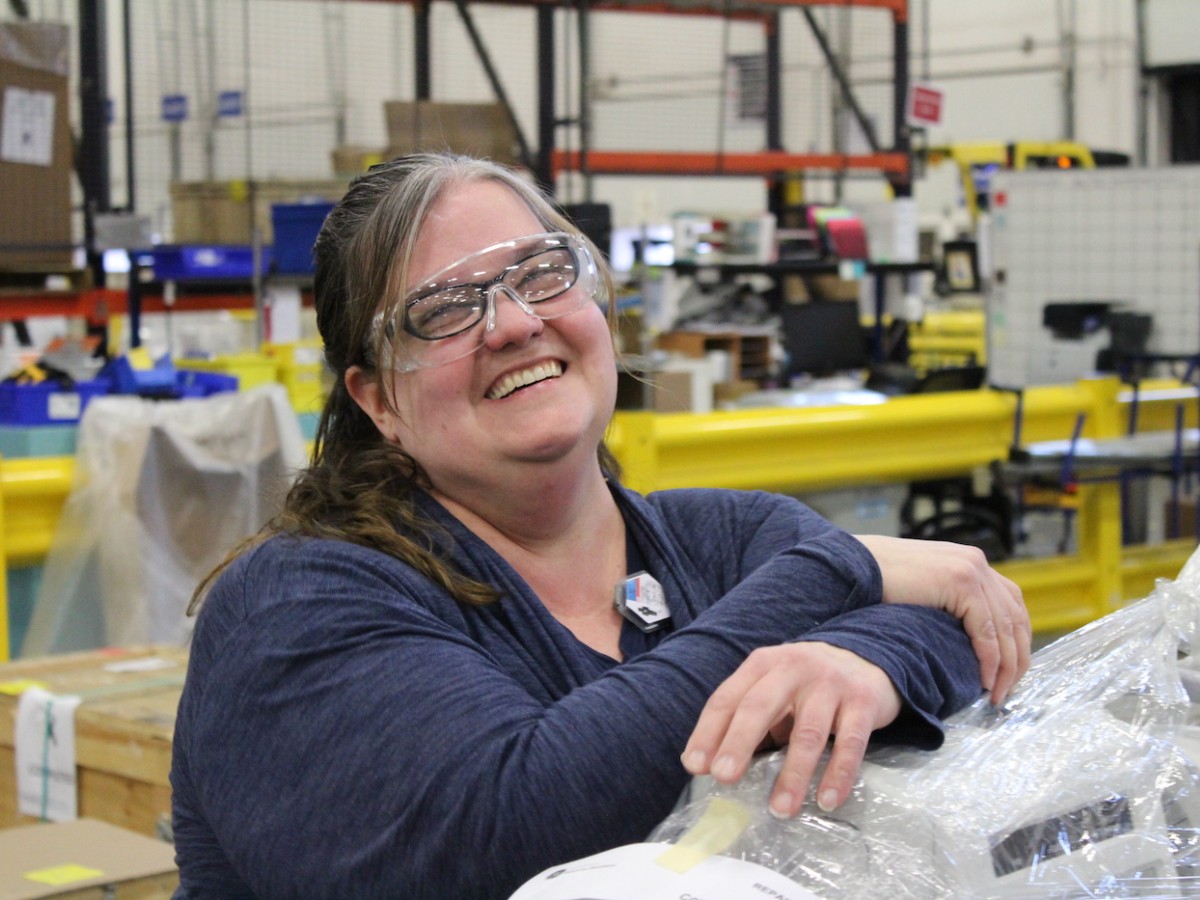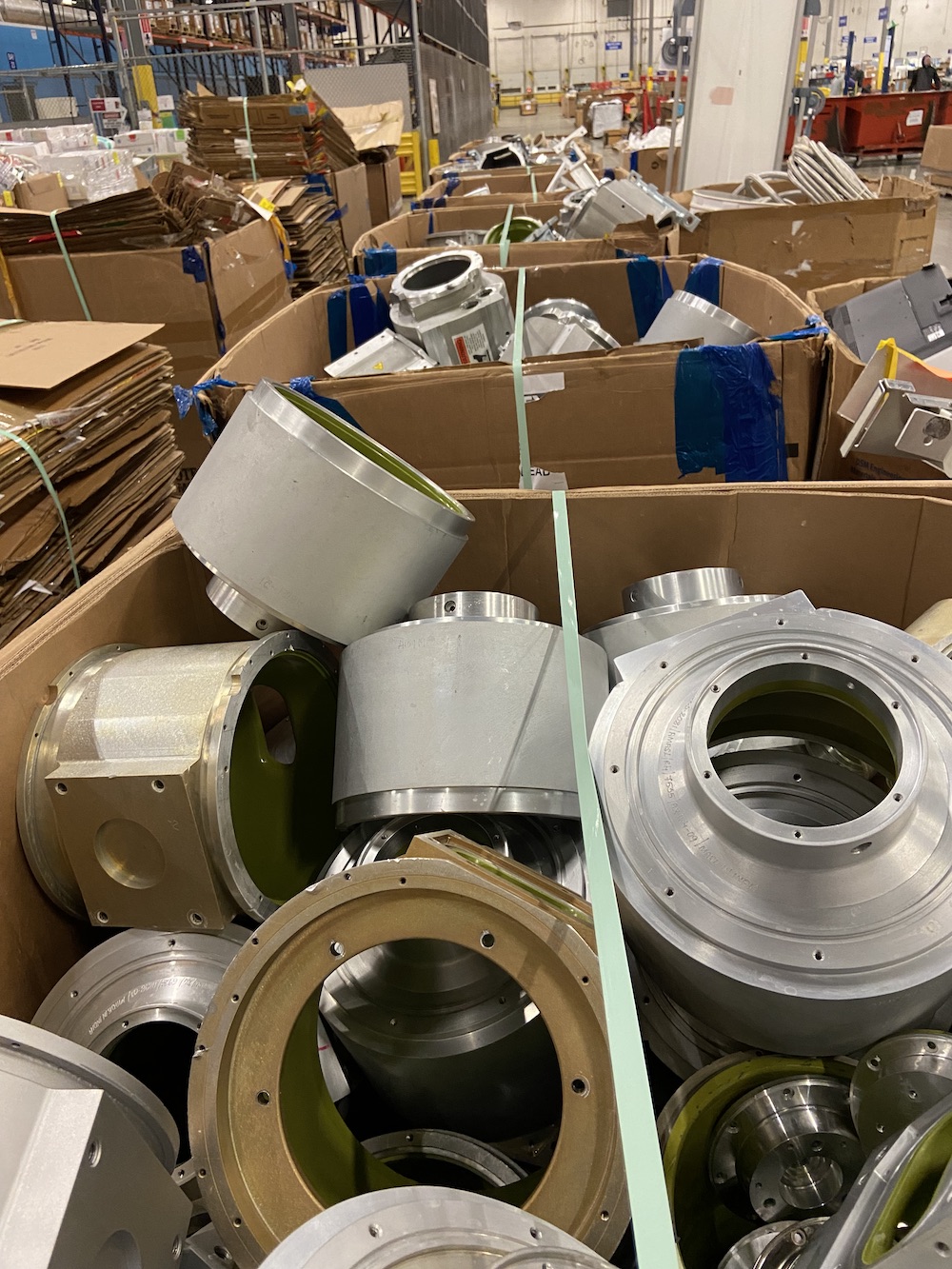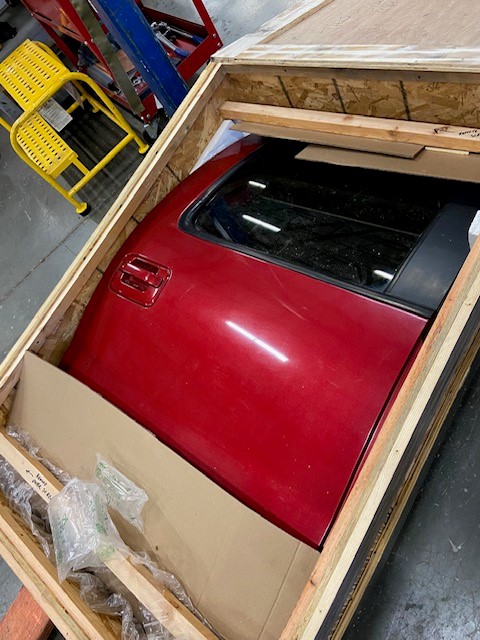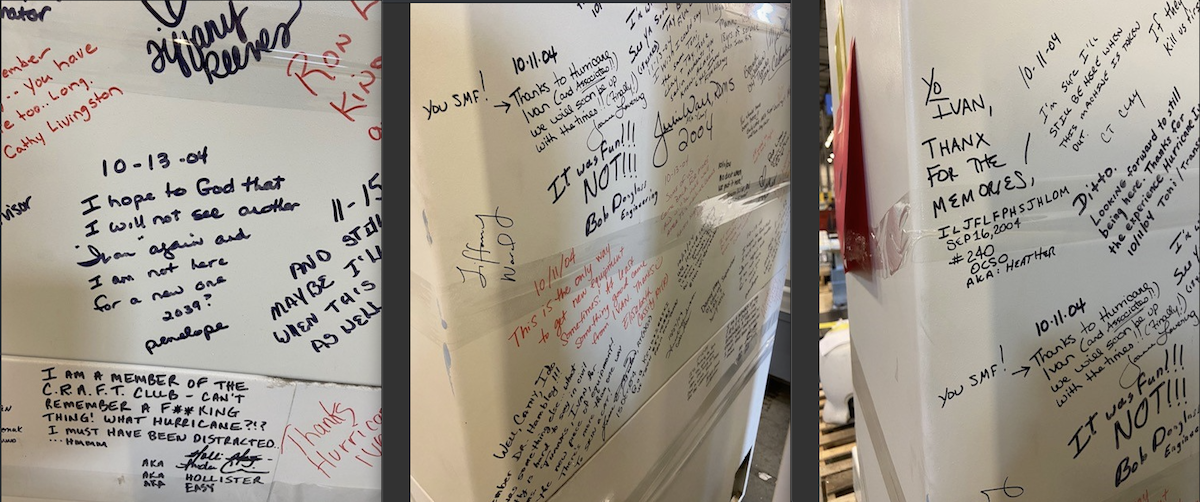What do a recently de-installed MR machine, a car door, and a power distribution unit cabinet at the end of its service life have in common? All of these items pass through GE HealthCare’s Recycling Center in Oak Creek, Wisconsin, where senior environmental health and safety technician Christine DuCette and her team find ways to recycle them.
Since February 2022, DuCette has been at the helm of the Recycling Center, which is part of GE HealthCare’s Repair Operations Center (ROC). It’s the company’s largest recycling center worldwide, and 10 million pounds of recyclable commodities move through it every year.
Despite the heavy material flow, the Recycling Center is the furthest thing from a junkyard. With industrial metal shelves climbing toward high ceilings and rows of oversize cardboard boxes lined up on pallets, it resembles a tidy warehouse. “There aren’t piles on the floor,” DuCette says. “It’s very organized.”
In fact, DuCette and her team recently went through a kaizen exercise to fine-tune their organizational skills and eliminate waste that contributes to errors, defects, and injuries in the workplace.[i] “Our objective was to set and order, streamline, and standardize the area to give it more organization — to give everything a home,” she says.
Though not for long.
Converting Old Machines Into Scrap Metal
The ROC facility handles equipment repairs. When something is unable to be repaired, it’s harvested for materials before being sent to the Recycling Center. Most items that DuCette receives are obsolete (or “de-installed”) hospital equipment and trade-ins.
On a typical day, six to eight 53-foot semi-trailer trucks deliver the de-installed material, while two or more semis packed tightly with aluminum, steel, or stainless steel remnants leave the center for recycling facilities. “That material’s constantly moving; we don’t sit on it,” DuCette says. “One of the metrics that we have is a six-day turnaround from receiving to leaving.”
A significant portion of material that passes through the Recycling Center is melted down and reused. “Of that 10 million pounds of material, we’re at about 83% that physically gets recycled and stays out of the landfill,” she says. “That’s 8.3 million pounds.”
Since most of the equipment that passes through the Recycling Center is emblazoned with the GE HealthCare logo, DuCette has to be selective about the recyclers she works with. GE Healthcare wants whole pieces of equipment recycled, not placed in landfills. “We’re not allowed just to send our material to anybody,” she says. “It has to be somebody that will break it down to a point to become scrap metal.”
When DuCette first took over the Recycling Center, they worked solely with recyclers based out of state. She’s since found local recyclers, including one in Milwaukee and another in Burlington, Wisconsin, that meet GE HealthCare’s standards and help reduce the company’s carbon footprint. Trucks transporting recyclable material now have much shorter drives to reach their final destinations.
“GE HealthCare is continuously focused on driving programs towards extending life cycle of equipment,” says Siva Balakrishnan, general manager of Lifecycle Solutions for GE HealthCare. “Almost 94% to 96% of the trade-in equipment is either renewed, refurbished, remanufactured, or recycled and does not make the landfill. Our vision is to create a world where healthcare has no limits — for us, this means driving this circularity program, keeping healthcare equipment out of the landfill, and doing our part to protect the planet.”
New Uses for Curious Old Items
DuCette and her team are known throughout GE HealthCare for their resourcefulness. They’ve had to process a car door, a bowling ball, even a stuffed goose. “That was just a mess-up in transit,” DuCette says. “We sent it back to the shipper.”
Whether the items come from machine shops (saw tables and drill presses) or hospitals (anesthesia machines, vaporizers), DuCette and her team have to be careful how they break down the material. “The drawers in anesthesia machines will [sometimes] have needles in them,” she says.
Most items that the Recycling Center receives are unremarkable pieces of medical equipment, but one seemingly ordinary PDU (power distribution unit) cabinet stood out.
“It had a bunch of signatures on the back of it,” DuCette says. After deciphering some of the comments made alongside the names, she was able to figure out that it came from a hospital that had been flooded during Hurricane Ivan in 2004. As a result, “they got this new PDU cabinet that all the nurses and radiologists signed, dedicating it.”
Touched by the sentimental inscriptions, DuCette took photos of the signatures before sending the unit to a recycler who processes stainless steel.
Thriving on Constant Change
The PDU cabinet photos were not the first shots that DuCette has snapped at work. Before taking over the Recycling Center in 2022, DuCette worked as a repair technician at the ROC for 17 years, specializing in ultrasound, X-ray, and MR equipment. (She has a degree in electrical engineering.) And every MR machine that comes through makes her stop and reminisce.
Catching a surprise glimpse of an old machine that she repaired years ago is part of what appeals to DuCette about her current position. She likes the “constant change,” she says. “No two days are the same. I spent 17 years where I could tell you every day what I was going to do that day, the next day, the next week. Whereas now, every day we have a new thing, a new discovery, a new something.”
REFERENCES
[i] Kaizen is a concept that refers to business activities that continuously improve all functions and involve all employees from the CEO to the assembly line workers.





